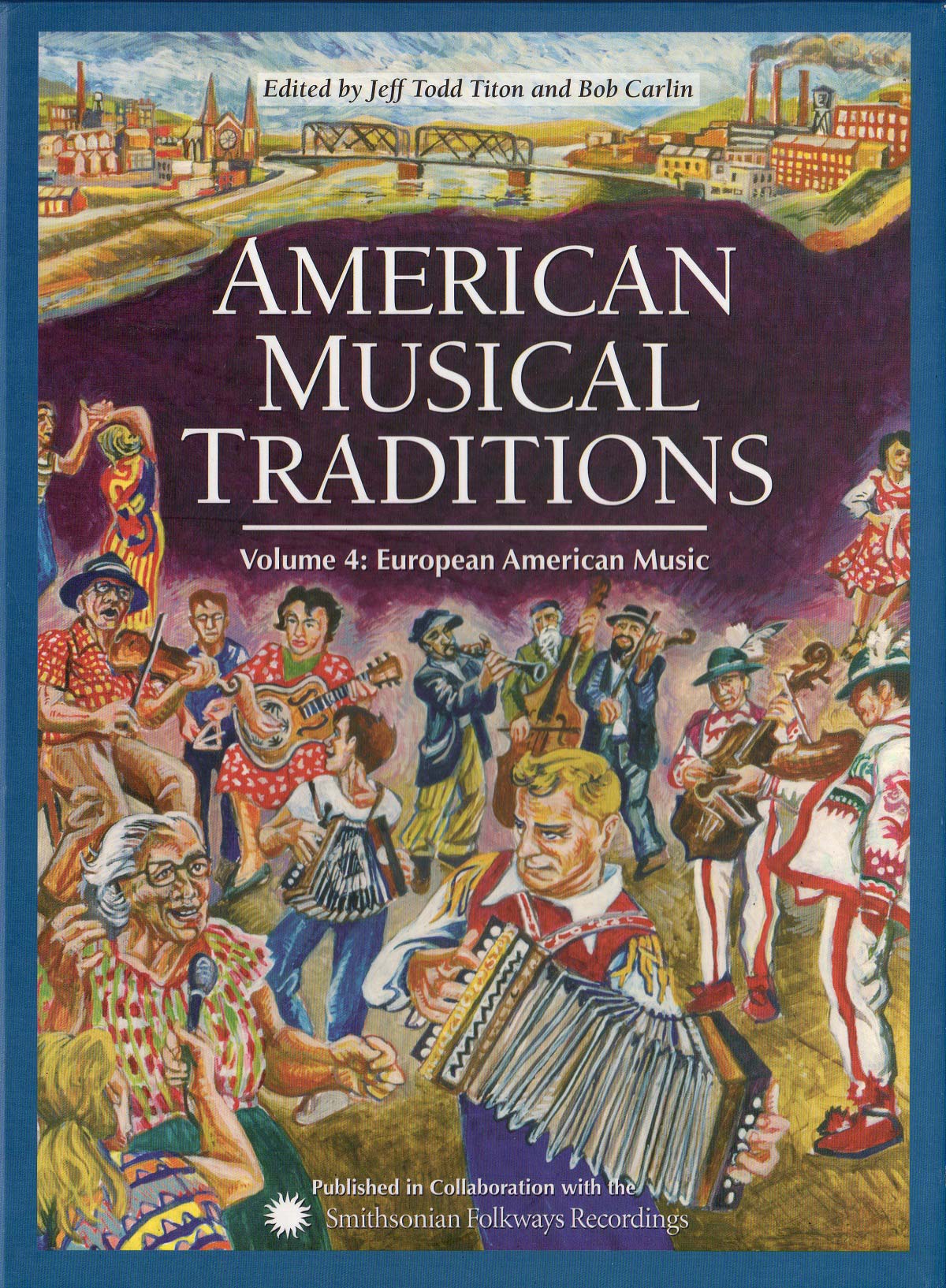Press
From School Library Journal
“Grade 9 Up–As Titon states in his introduction, this work is not intended to be an exhaustive study but rather a “spicy stew, a mosaic, and a mix” giving a flavor of the wide range of regional and ethnic music still evolving in our country. Separate volumes cover the traditions of Native Americans, African Americans, the British Isles, European Americans, and Latino and Asian Americans. Essay topics range from the general (“Chicago Blues,” “Mexican Mariachi”) to the highly specialized (“Music of the Old Regular Baptists of Central Appalachia,” “Trinidadian Percussion Traditions in Miami”) and include articles on specific instruments (autoharp, button box accordion) and musicians.
Some of the authoritative essays were commissioned especially for this publication, while others were taken from the liner notes of Smithsonian Folkways Recordings or program booklets created for the annual Smithsonian Folklife Festival. Each essay concludes with a brief bibliography; information on accessing related recordings via two Web sites is found in the introduction.
Black-and-white archival photos accompany most of the two- to eight-page essays, with a few more recent color shots scattered throughout the volumes. Numerous maps identify the regions being described and the locations of tribes or ethnic communities within those regions. Some maps are so specific that they pinpoint the hometowns of particular musicians.
This is an excellent resource for large public or secondary school libraries, particularly those with sizable music collections and those located in communities with active local folk-music scenes.”
—Ginny Gustin, Sonoma County Library System, Santa Rosa, CA
Copyright 2002 Cahners Business Information, Inc.
From Booklist
Imagine that you have the entire Smithsonian Folkways Recordings collection in the jukebox and further imagine that sitting around you in the pub are the people who wrote the liner notes, all in a talkative mood, explaining the history, context, and instruments as you listen to the music. American Musical Traditions may be the closest you will get to that experience.
This is not a traditional A-Z encyclopedia of music but rather a collection of more than 100 essays that was conceived to “reflect recent research by folklorists and ethnomusicologists on the one hand, and the holdings of the Smithsonian Institution’s Center for Folklore and Cultural Heritage on the other.” These essays are not aimed only at the music scholar but at all who would like to enjoy a deeper understanding of U.S. musical heritage. The Folkways catalog number is included in selected essays, allowing the reader to access samples of the music on the Smithsonian’s Web site.
Native American music is the subject of volume 1, with volume 2 covering African American music, volume 3 the music of the British Isles, volume 4 European American music, and volume 5 Latino American and Asian American music. The editors have “selected representative communities and musical genres to give an idea of the range of traditional music in the United States.” Essays titled “Caribbean Percussion Traditions in Miami”; “Diwali in Seattle: The Joyous Traditions Continue”; and “The Gandy Dancer Speaks: Voices from Southern Black Railroad Gangs” give an idea of the set’s coverage. The opening introduction is repeated in each volume, as are the table of contents and the indexes to all five volumes. At the beginning of each essay is a short biographical paragraph about the author. At the end of each essay are a bibliography and occasionally a discography and videography. There is an additional bibliography at the end of each volume. Throughout the text, some words are in bold type, with definitions provided in a glossary at the end of each volume for words in that volume. Colorful maps and historic photographs add to the richness of the set.
This work is not for an audience looking for two pages on Celtic music, but it is for libraries with strong music collections or that want to provide a source of unique information for traditional or folk musicians in their communities. Though there is overlap with the more scholarly and comprehensive “United States and Canada” volume of The Garland Encyclopedia of World Music (1994), American Musical Traditions treats some topics in greater detail, and students may find it more accessible. Just be sure to have an Internet connection nearby with headphones so that users can listen to the Folkways samples.” —RBB
Copyright © American Library Association. All rights reserved
